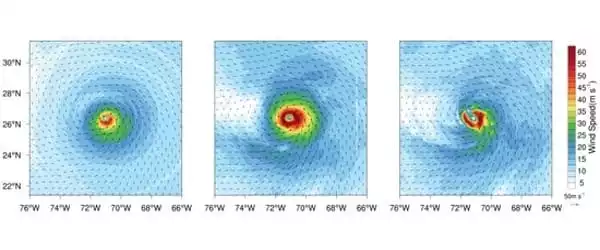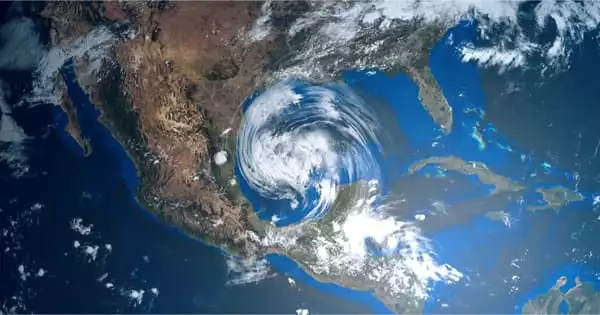Hurricane Harvey made landfall over coastal Texas in 2017, pouring down record rainfall, flooding neighborhoods, and becoming one of the wettest and most catastrophic storms in US history. According to Penn State scientists, a novel technique based on freely available data decreases forecast errors and has the potential to enhance track, strength, and rainfall projections for future storms such as Hurricane Harvey.
“Our findings suggest that there are opportunities for developing more accurate forecasts for tropical cyclones utilizing available but underutilized data,” said Yunji Zhang, assistant research professor in Penn State’s Department of Meteorology and Atmospheric Science. “In the future, this could lead to greater alerts and preparedness for tropical cyclone-related threats.”
Using Hurricane Harvey as a case study, the scientists found that incorporating microwave data acquired by low-Earth orbiting satellites into existing computer weather forecast models improved forecasting storm track, intensity, and rainfall.
“Over the ocean, we don’t have other kinds of observations beneath the cloud tops to tell us where the eyewalls are, where the strongest convections are, and how many rain or snow particles there are in those regions, except for the occasional reconnaissance aircraft that fly into some of the hurricanes,” Zhang explained. “This is critical for future forecasts of how powerful storms will be and how much rainfall hurricanes will bring.”
This is especially critical as a hurricane evolves in later stages of development, when there are prominent and coherent cloud structures and you can’t see what’s going on underneath them. Rainfall forecasting is crucial for preparing the public for risks and evacuations.
Yunji Zhang
The study builds on the team’s previous work, which improved hurricane forecasts through data assimilation, a statistical method that aims to paint the most accurate picture of current weather conditions, which is important because even minor changes in the atmosphere can lead to large discrepancies in forecasts over time.
Scientists from Penn State’s Center for Advanced Data Assimilation and Predictability Techniques previously assimilated infrared brightness temperature data from the US Geostationary Operational Environmental Satellite, GOES-16. Brightness temperatures indicate how much radiation is emitted by things on Earth and in the atmosphere, and the scientists employed infrared brightness temperatures at various frequencies to build a more accurate image of atmospheric water vapor and cloud formation.
However, infrared sensors can only see what is happening at the cloud tops. According to the scientists, microwave sensors can see a complete vertical column, providing unprecedented insight into what happens beneath clouds after storms begin.

“This is especially critical as a hurricane evolves in later stages of development, when there are prominent and coherent cloud structures and you can’t see what’s going on underneath them,” Zhang said. “Hurricanes are most dangerous at this period because they are extremely powerful and, in some cases, are already approaching landfall and posing a threat to humanity. That is when microwave data will provide the most useful information.”
The researchers reported in the journal Geophysical Research Letters that combining integrated infrared and microwave data reduced forecast errors in course, rapid intensification, and peak strength for Hurricane Harvey compared to infrared radiation alone. They claimed that combining both sets of data resulted in a 24-hour increase in forecast lead-time for the storm’s rapid intensification, a vital phase when some storms rapidly gain power.
According to the experts, including the microwave data resulted in a better understanding of the number of water particles in the storm as well as more precise rainfall totals for Harvey.
“Rainfall forecasting is crucial for preparing the public for risks and evacuations,” Zhang said. “If we have a better grasp of how many rainfall particles are in the storm, we will be able to make more precise estimates of how much rain will fall. We will have more advanced instructions on how individuals should react as a result of this.”
More work is needed, according to the scientists, to improve the model’s microphysics and replicate water and ice particles more realistically. This research is based on the work of former Penn State Distinguished Professor Fuqing Zhang, who directed the project until his untimely death in July 2019.
“When our dear friend and colleague Fuqing Zhang passed away, the thread of ideas that had been weaving together our ongoing combined infrared and microwave radiance data assimilation experiments unraveled,” said Eugene Clothiaux, professor of meteorology and atmospheric science and a co-author of the paper. “We worked together for a long time to reassemble the thread as best we could.”





